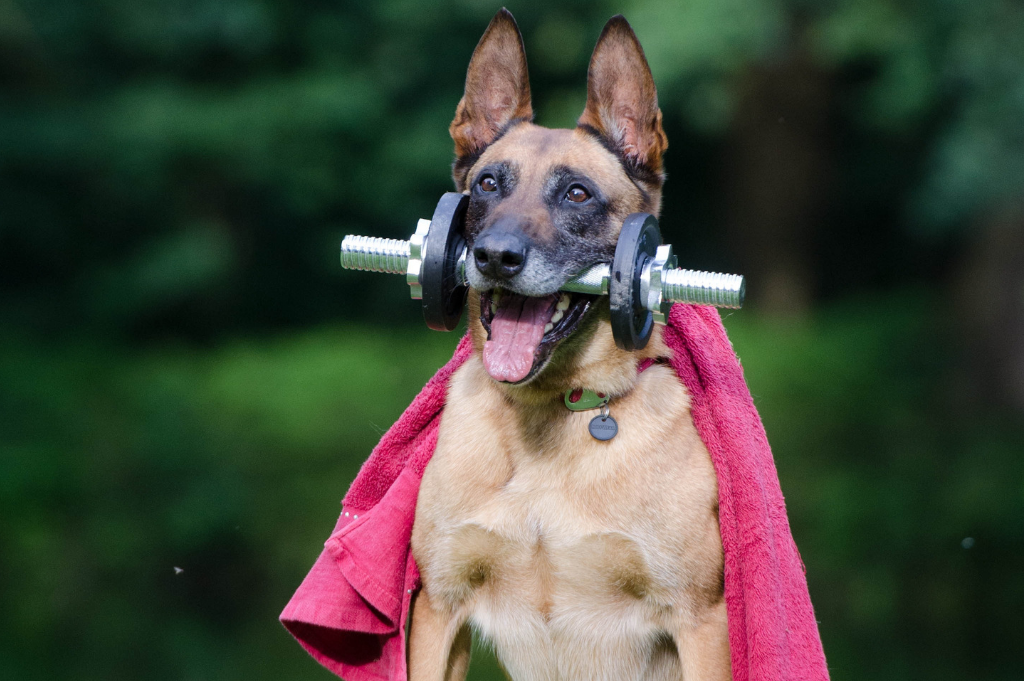Every athlete knows how hard it can be to find an exercise partner that’s willing to go to the same lengths as you during your workout. Luckily, most dog-owners who love to engage in physical activity will tell you that pets often make excellent workout companions. In fact, there have even been some studies that show how people who exercise with their dogs may even be providing themselves with a more intense workout than they realize. Of course, there are specific safety measures you should consider taking to ensure that not only you get the exercise you need, but that your pet isn’t enduring more than it can handle. For any athlete trying to work their little buddy into the mix, here are a few tips to consider when it comes to efficiently exercising with your dog:
Double the workout
While many dog owners consider running with their dogs as a chance to get some exercise as well as wear their pet down for later, there are also unforeseen benefits that can arise from having your companion be a workout buddy. Researchers from the University of Missouri that analyzed whether those who run with a dog are actually providing themselves with better opportunities to lose weight than compared to most nationally recognized diet plans. Participants started off engaging in 10 minute dog walking sessions three times a week, gradually building up to 20 minutes a day, five times a week. The results showed that the average participant lost 14 pounds after abiding by this routine for 50 weeks, which is better than what the majority of major dieting plans report.
Safety considerations
While your workout is certainly important, no decent pet owner wants to have to sacrifice their dog’s enjoyment by dragging it along with them during a jog. For starters, you need to take into account what type of dog you have. Smaller breeds such as pugs or Chihuahuas will probably not make the best running partners, unless you’re carrying them along with you. Dogs with longer legs, such as Labradors or golden retrievers, will be able to take bigger strides, allowing them to adequately keep pace with you down the stretch. If your dog is overweight, you’ll also most likely encounter periods where the animal simply can’t go on. If weight is a concern for your dog, treat the scenario as you would yourself, and put it on a healthier diet. Running in addition to eating better food will help contribute to weight loss.
The time of day you take your dog along for a run with also has a big impact upon its well being. Dogs only produce sweat through their paws, and pant just to try to stay cool. With all that fur, running with you under the hot sun can be a grueling experience. Try to time your routes either early in the morning or just before the sun sets, so your pet can avoid any possible chances of overheating or fatigue. It’s also a wise idea to bring a water bottle along so you can squirt some fluids onto your dog’s tongue all throughout the jog.
Remember, some dogs won’t pick up on this type of workout routine right away. It may take some training for the animal to understand that this isn’t the same as going out for a regular walk, where it can mosey around and take time to smell its surroundings. Begin easing your dog into these types of workouts by running at a slower pace at first, gently tugging at its leash once it abruptly changes direction. Never continuously pull back on the leash, which can easily hurt the animal’s neck.
Dog-friendly strategies
Sometimes, it can be unrealistic to expect your dog to consistently run with you for however long your jog is. A great way to combat the inevitable inability to focus is by adhering to more interval methods of running. This means having a few minutes of consistent running followed by a quick resting period, where your animal can stop to relieve itself or catch its breath. You can continue this method throughout your workout, increasing the periods of running while decreasing the resting durations the longer you jog.
If you have a particular destination that you’re running to, try jogging non-stop until you arrive there, then take a few minutes to rest or hydrate your dog. A great place to head out to is a park, where you can also engage in a rousing game of Frisbee with your dog to keep the physical activity going. Looking to switch things up? Head out to a public place that has a long set of stairs, and jog up and down each step, with your dog following you. This will add more intensity to both of your workouts. Finally, if all else fails, a stimulating game of tag or fetch is always a bonding exercise that can wear both of you out.

